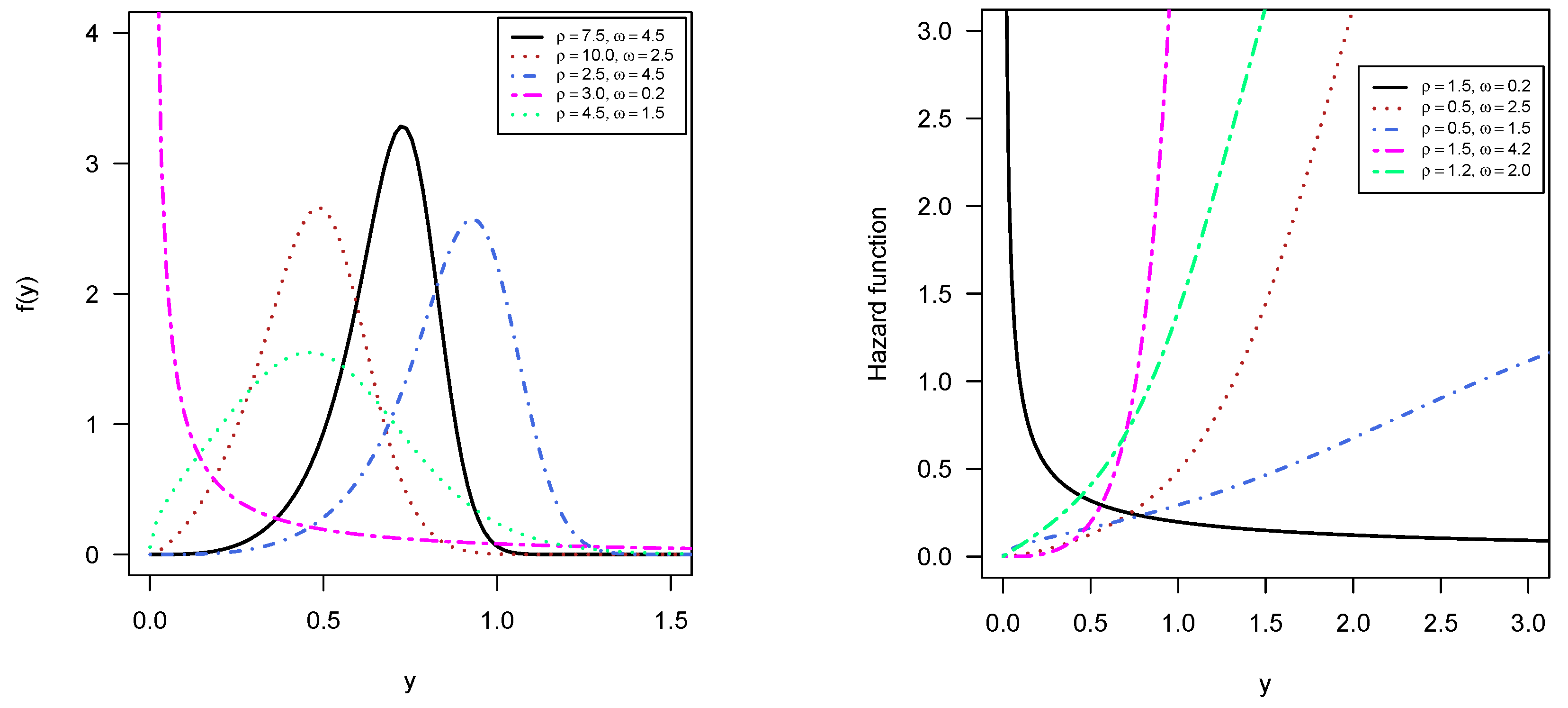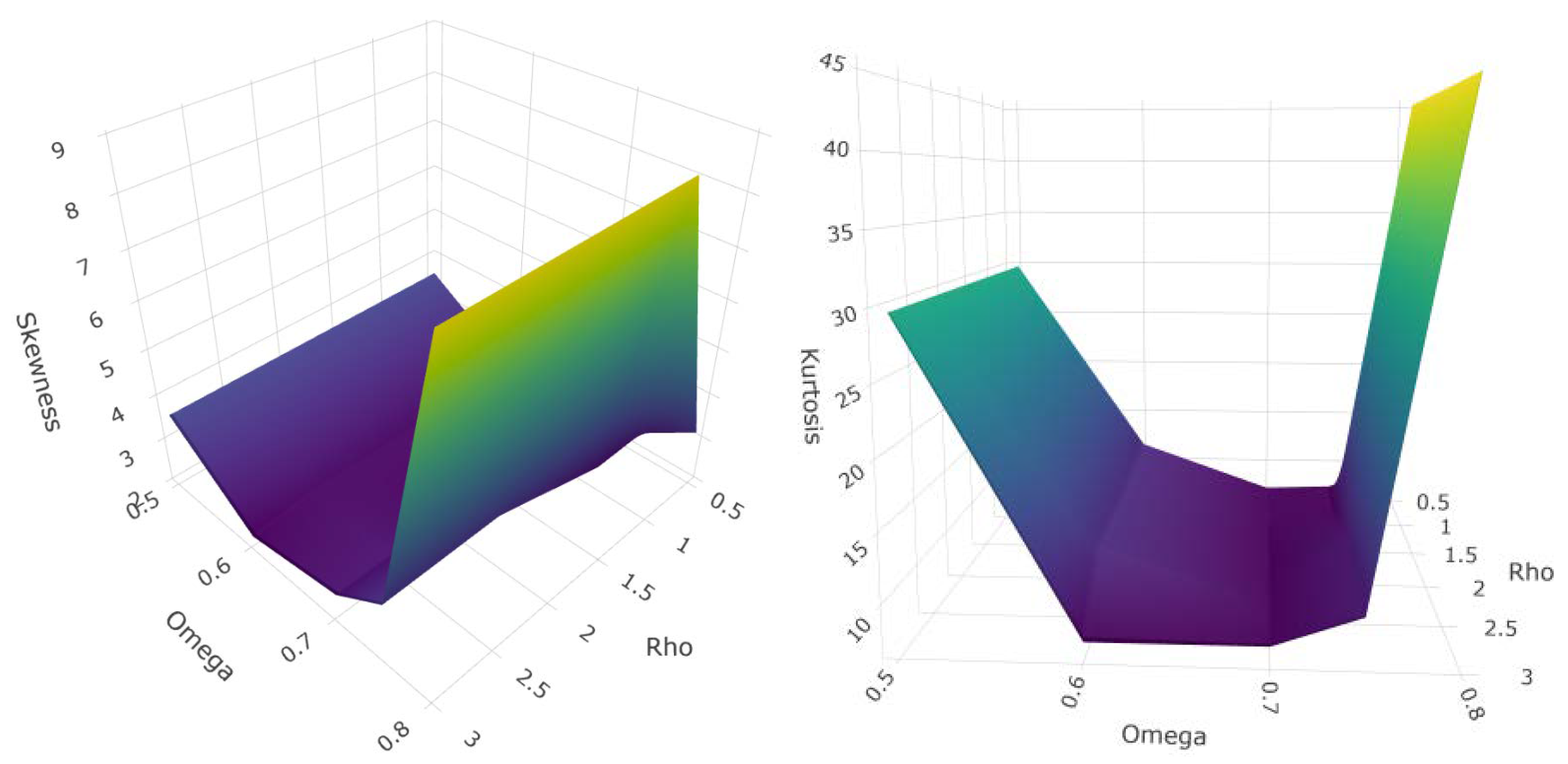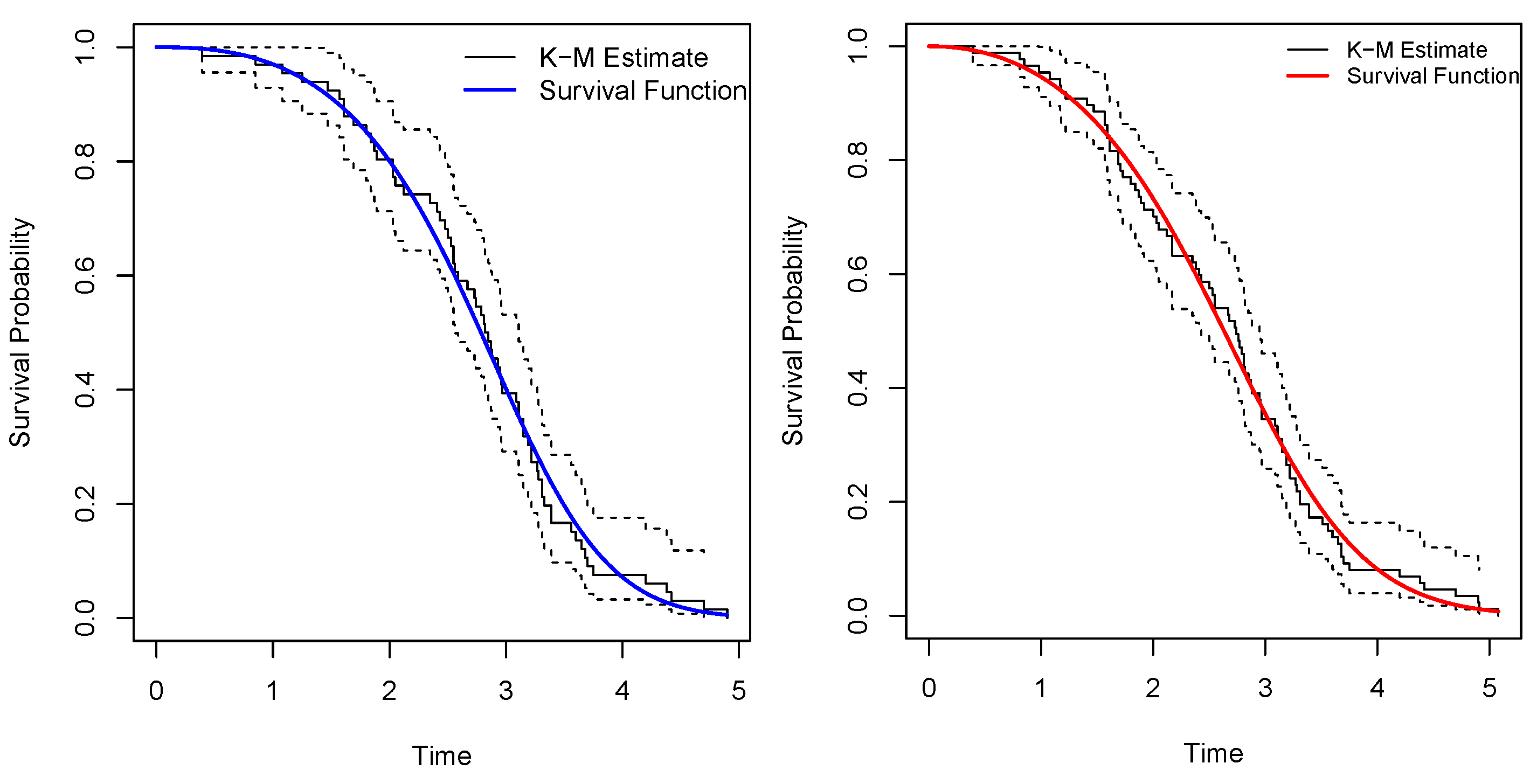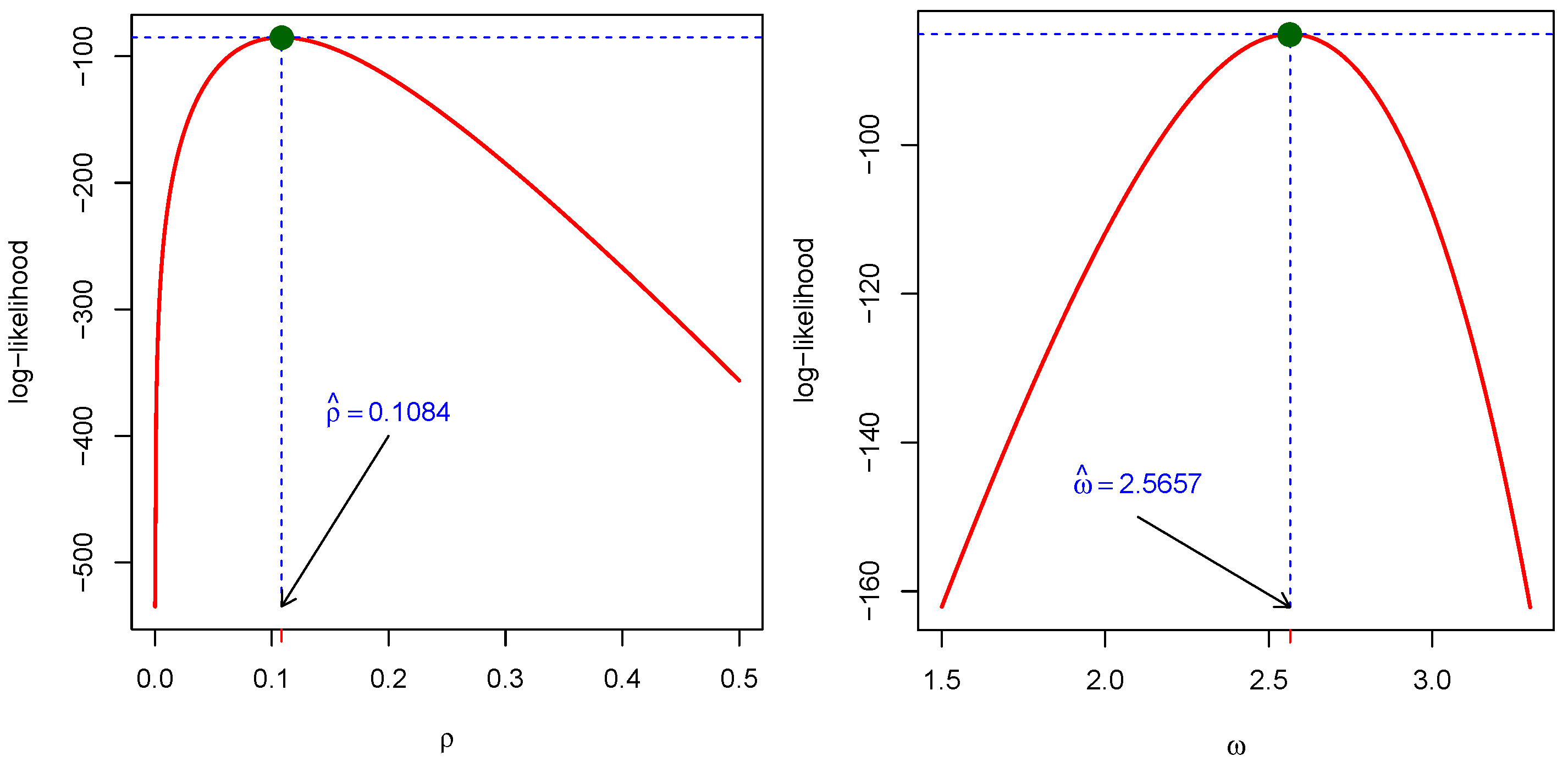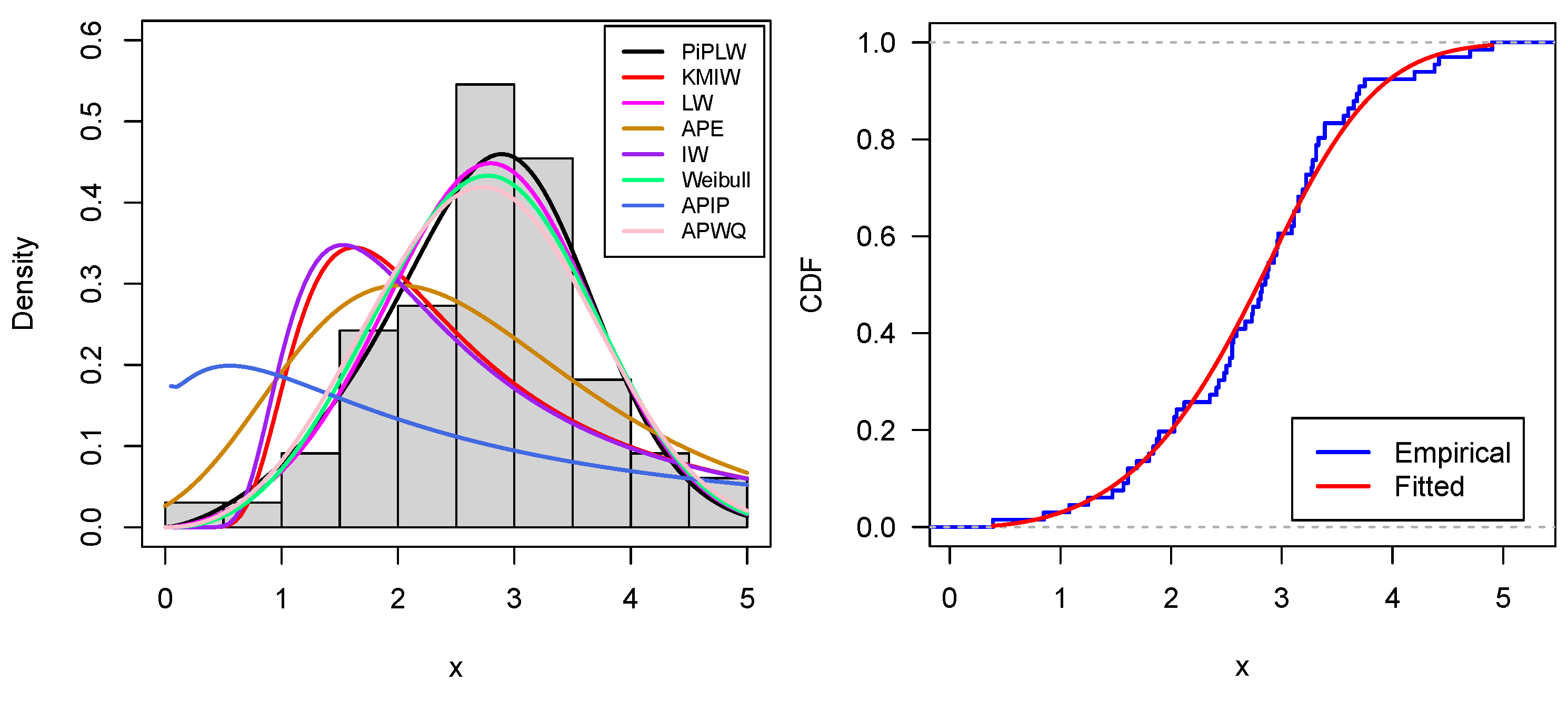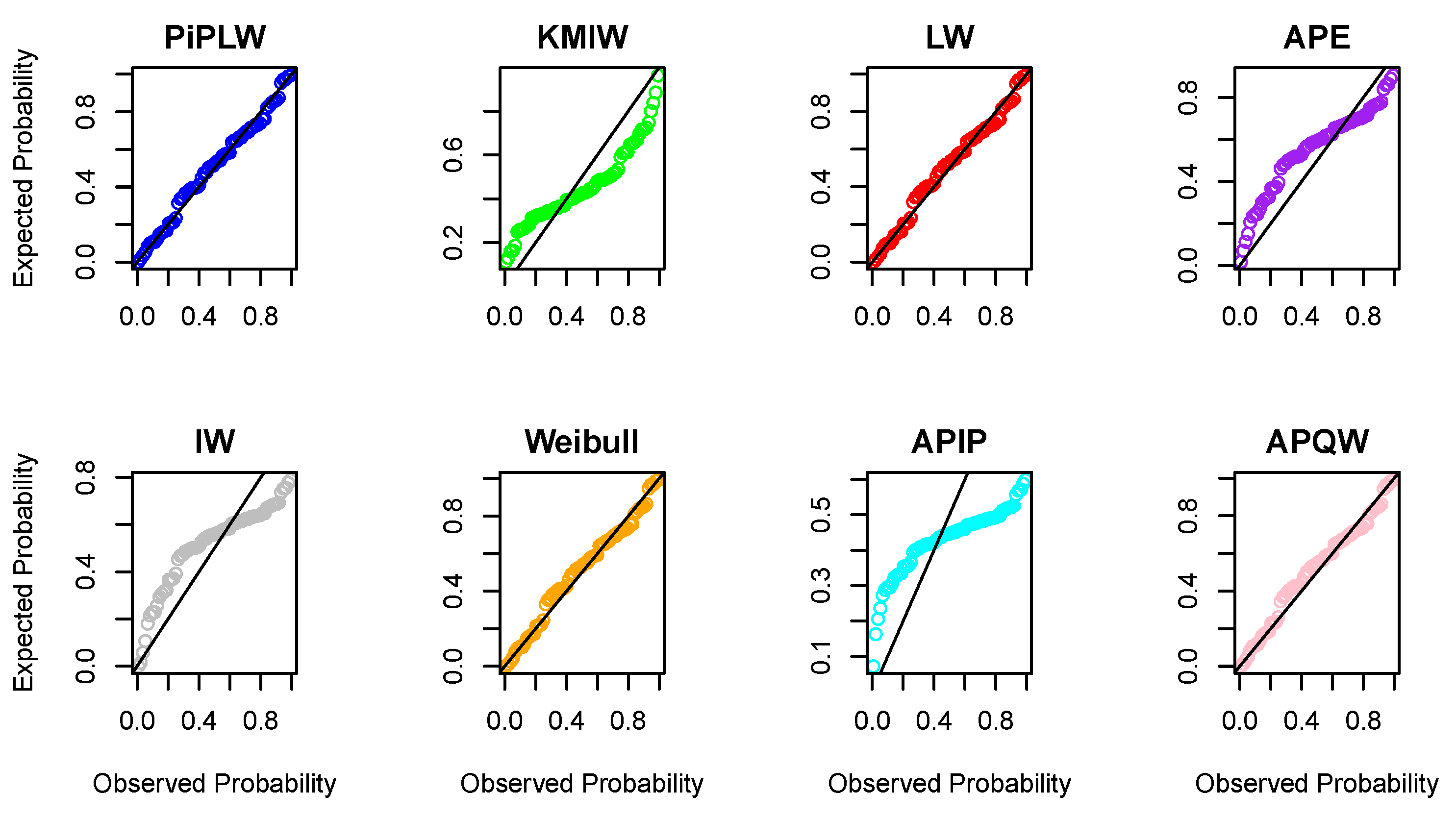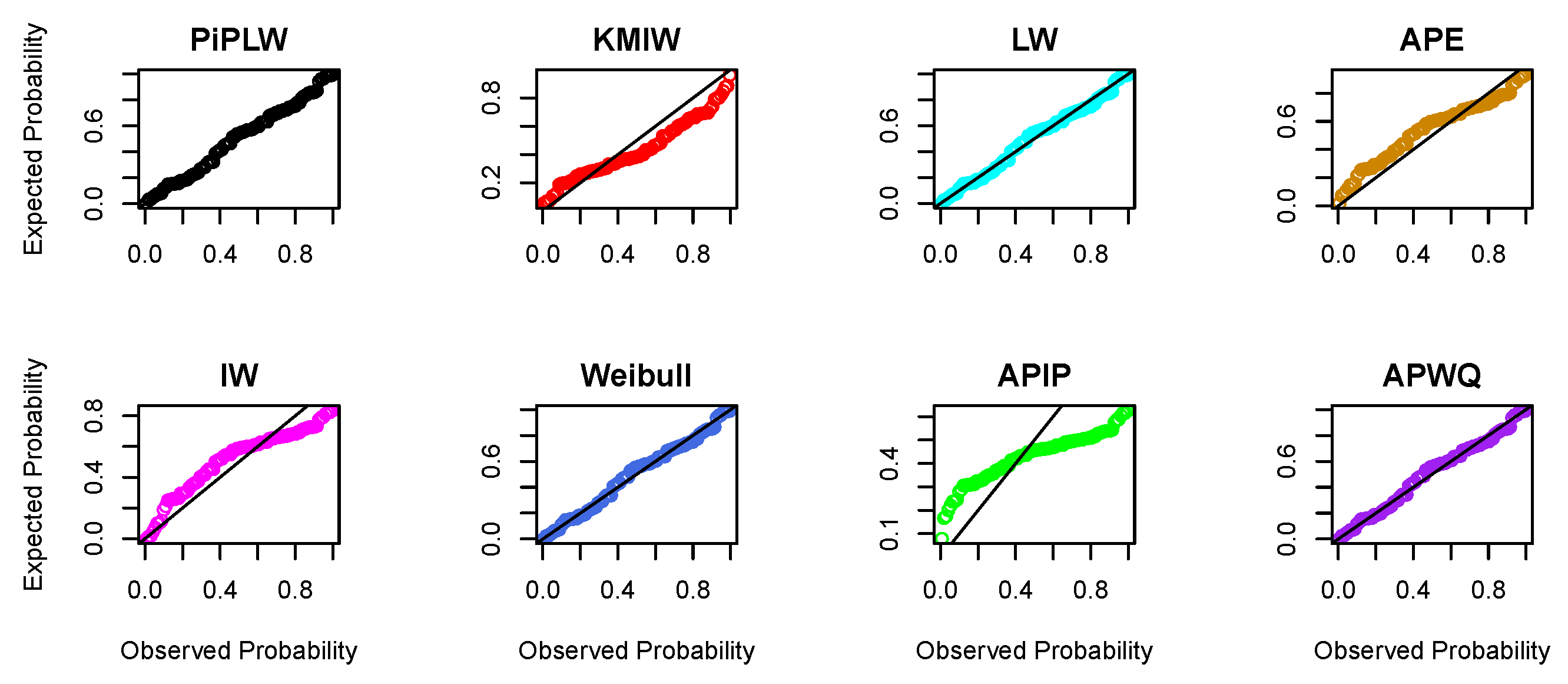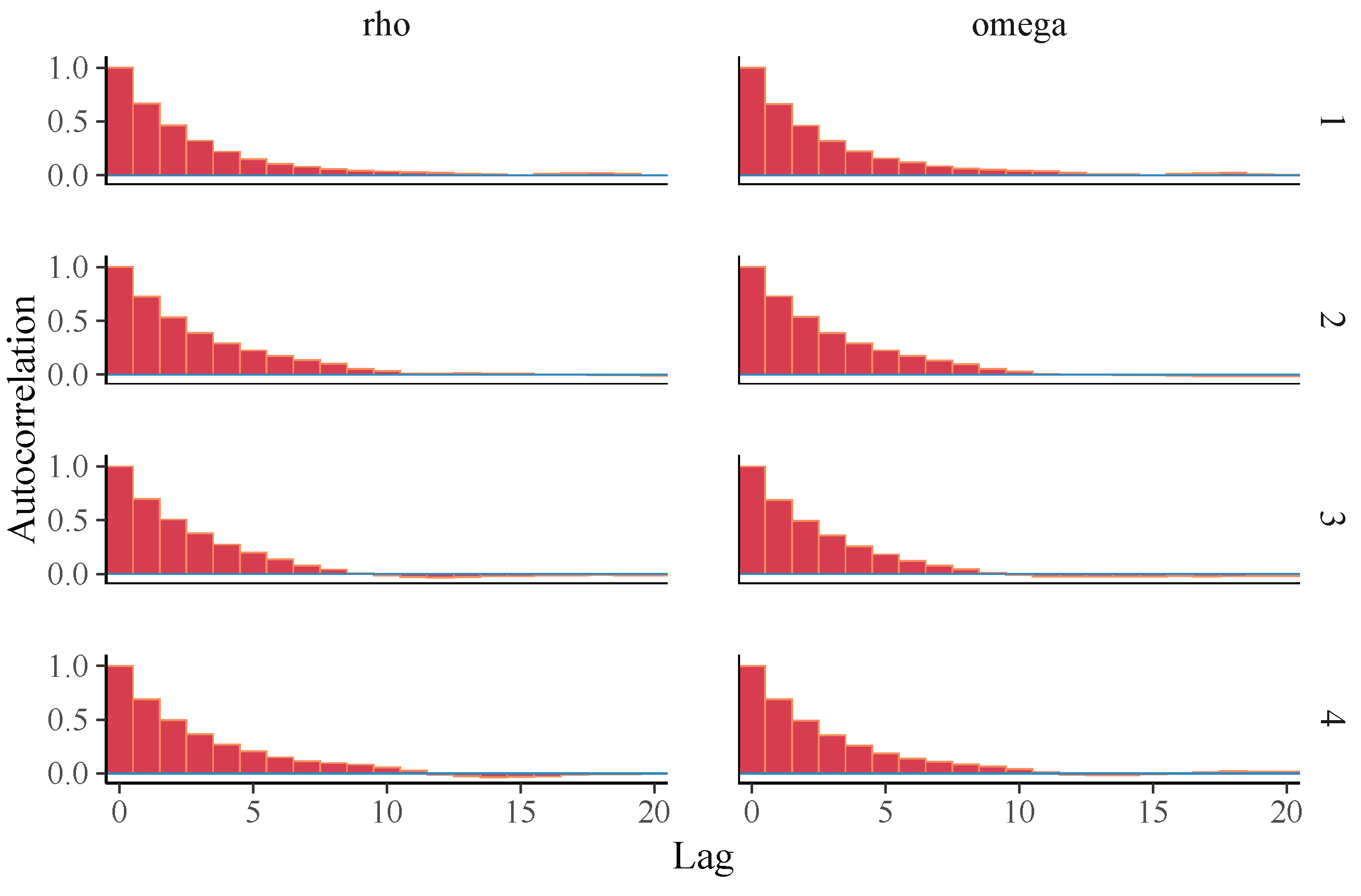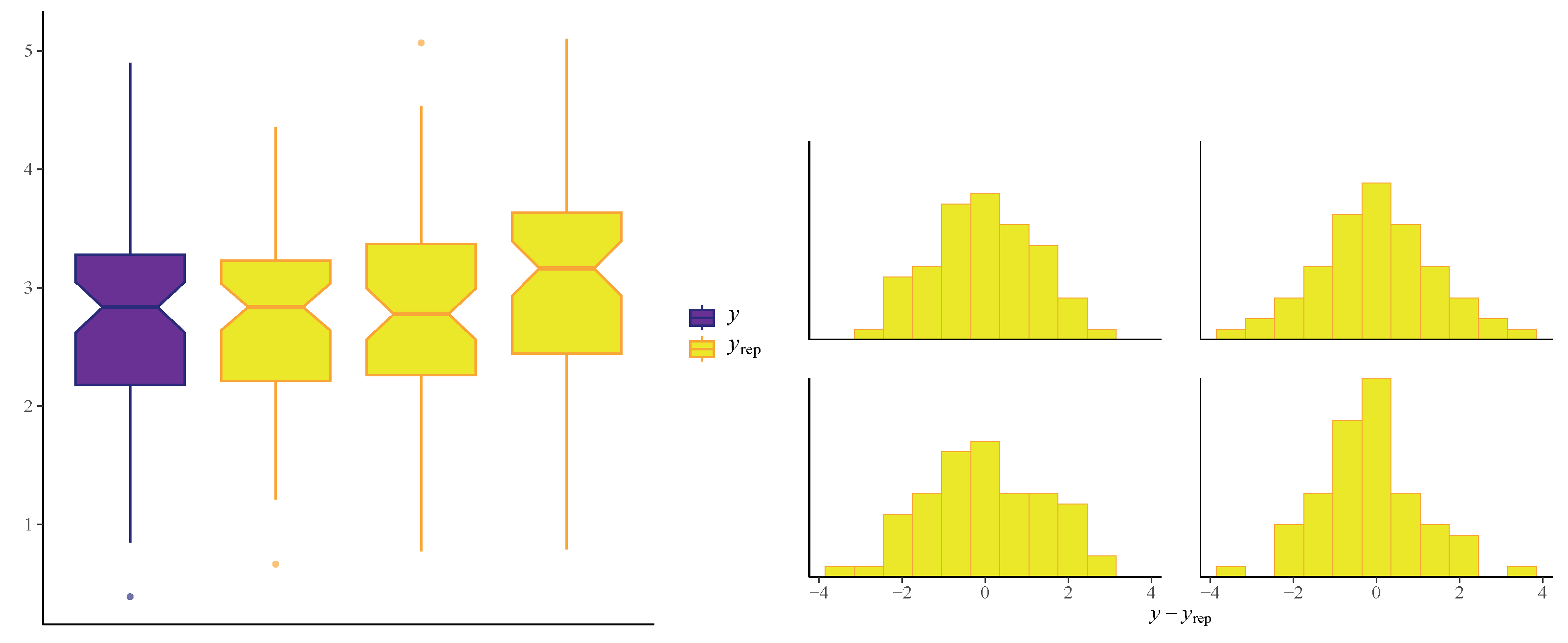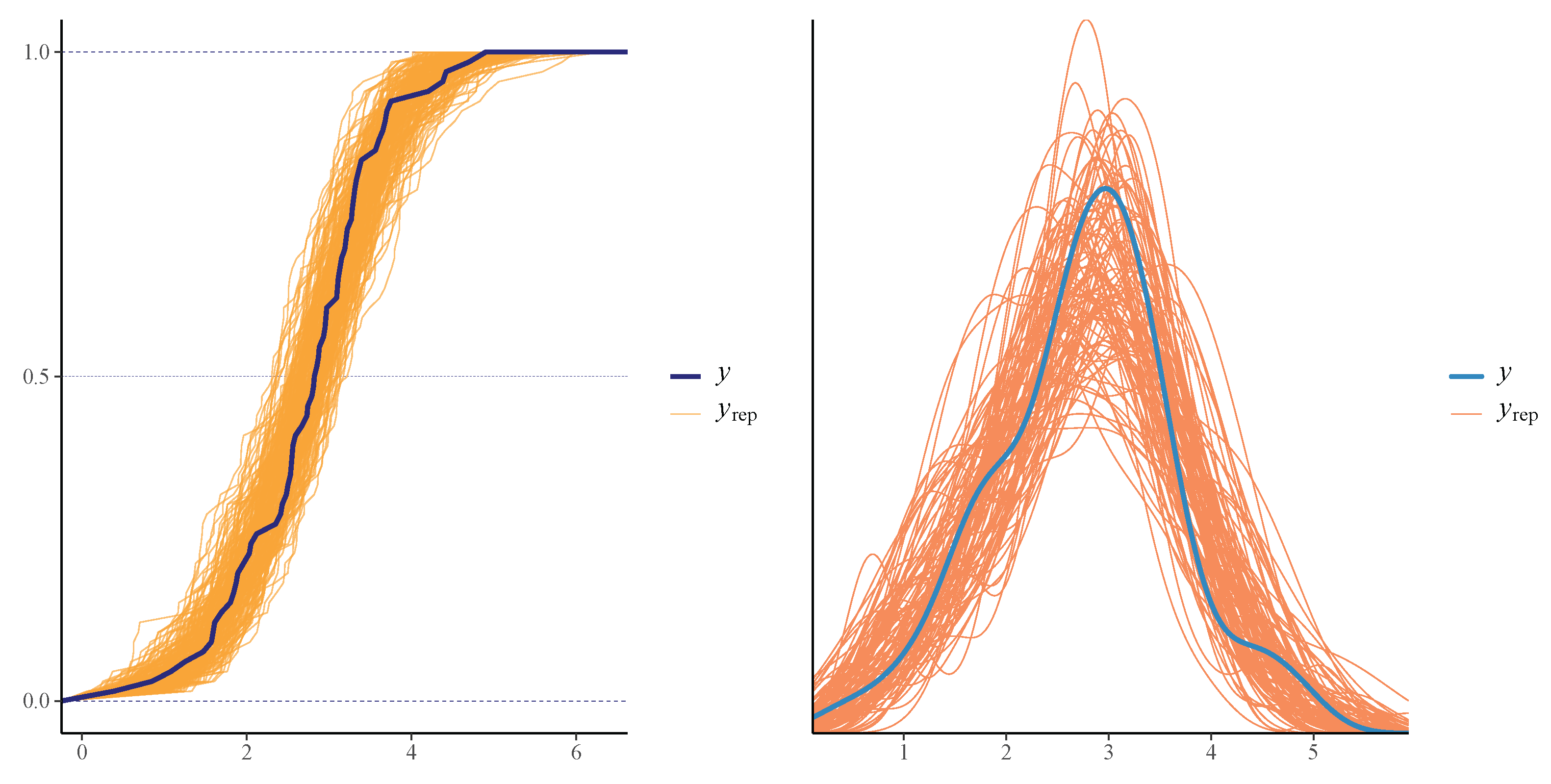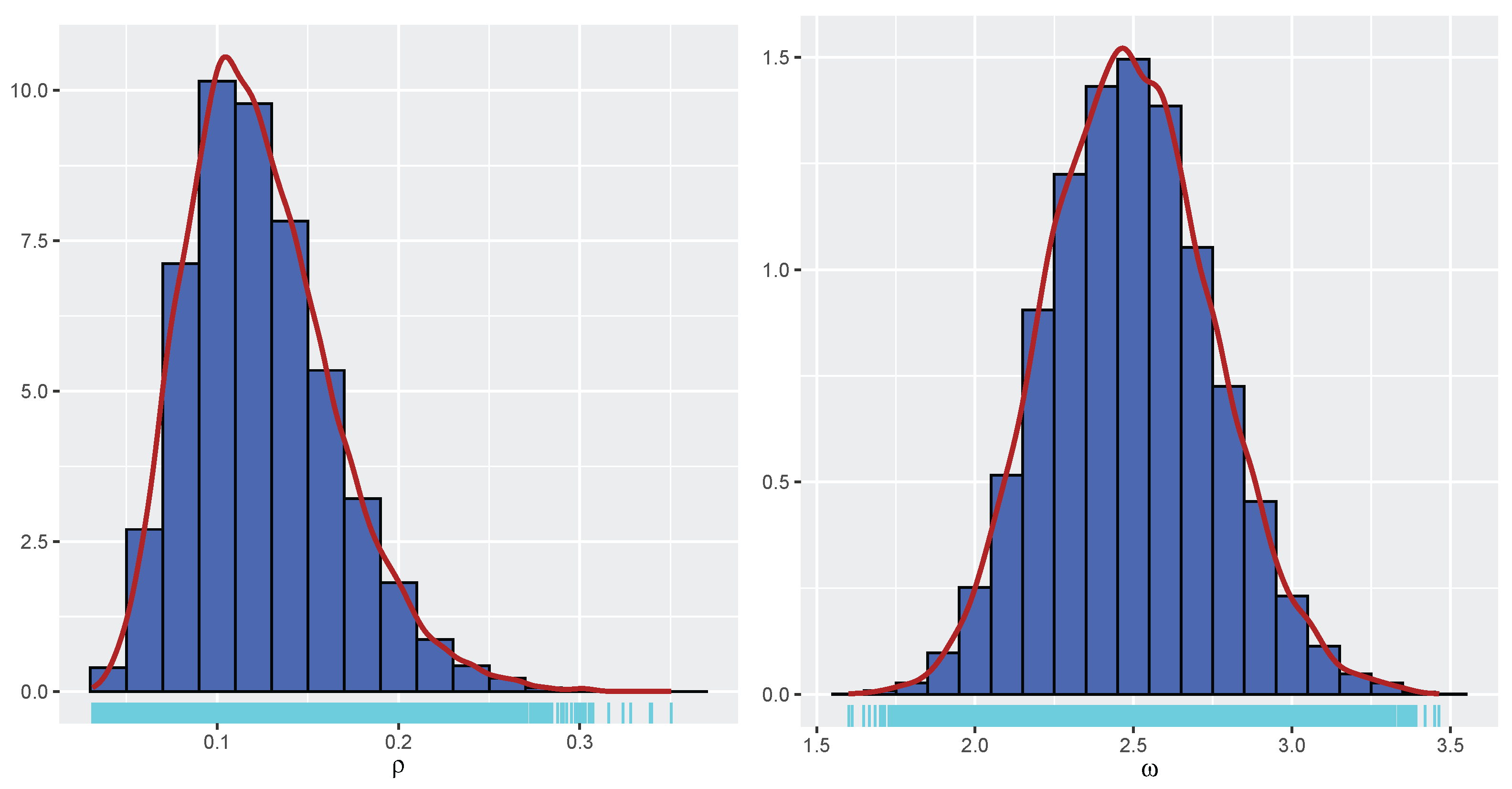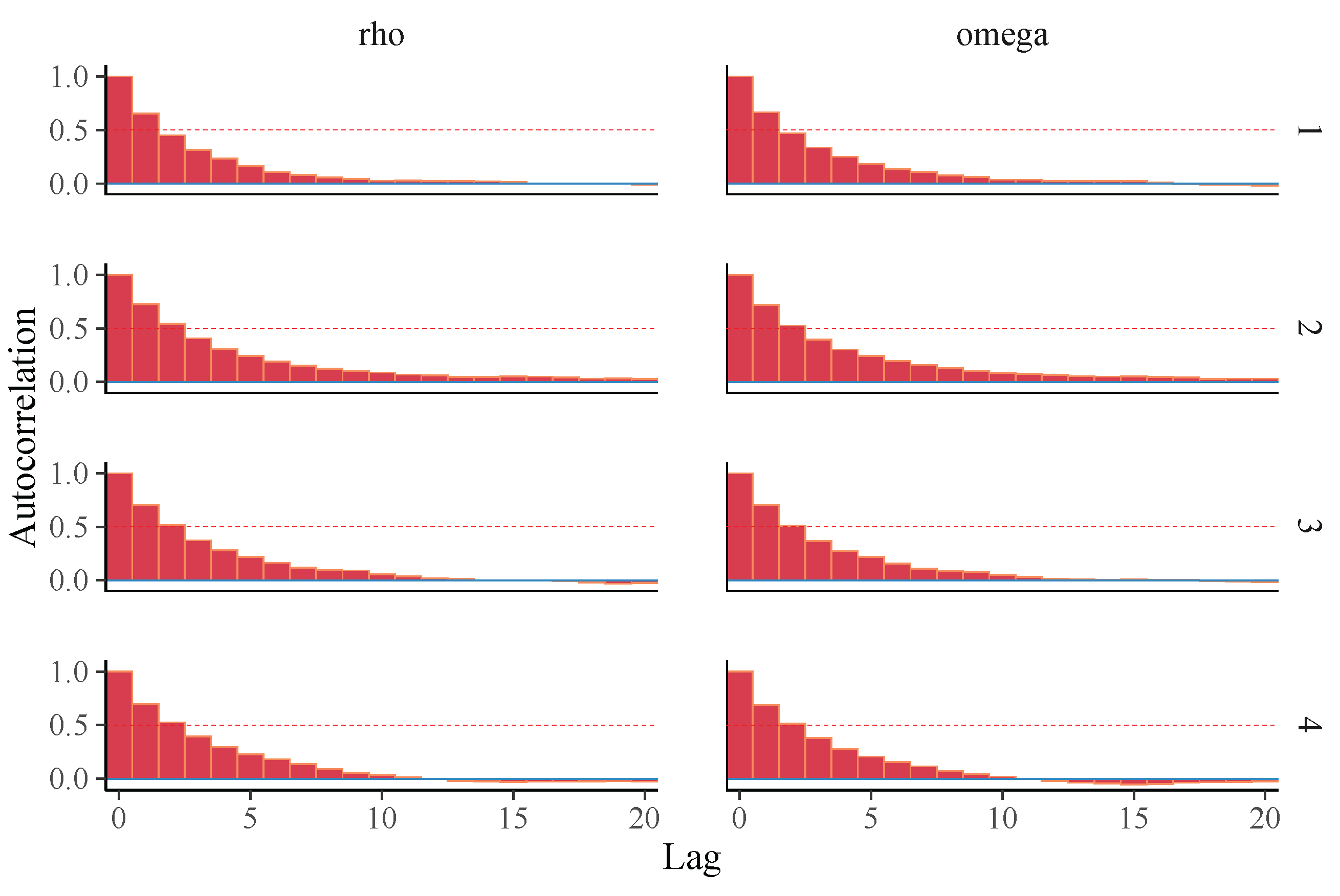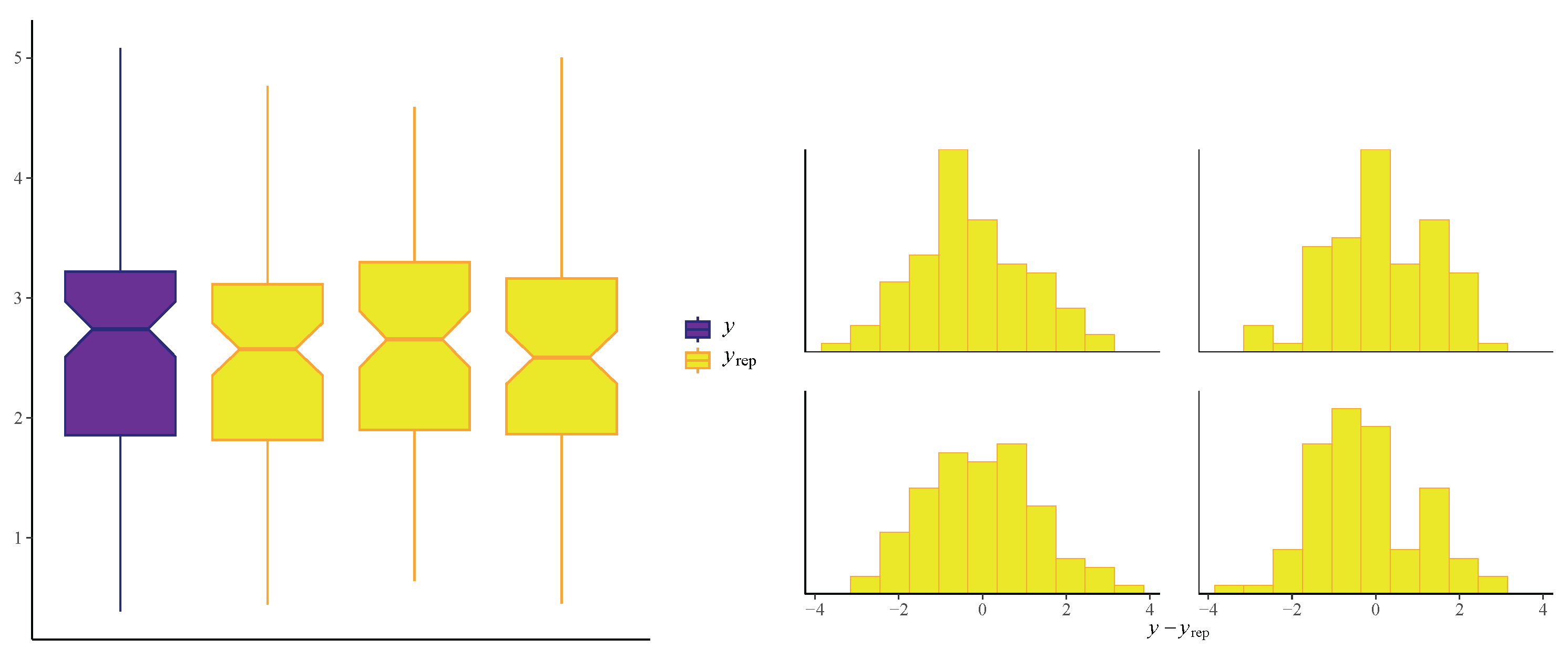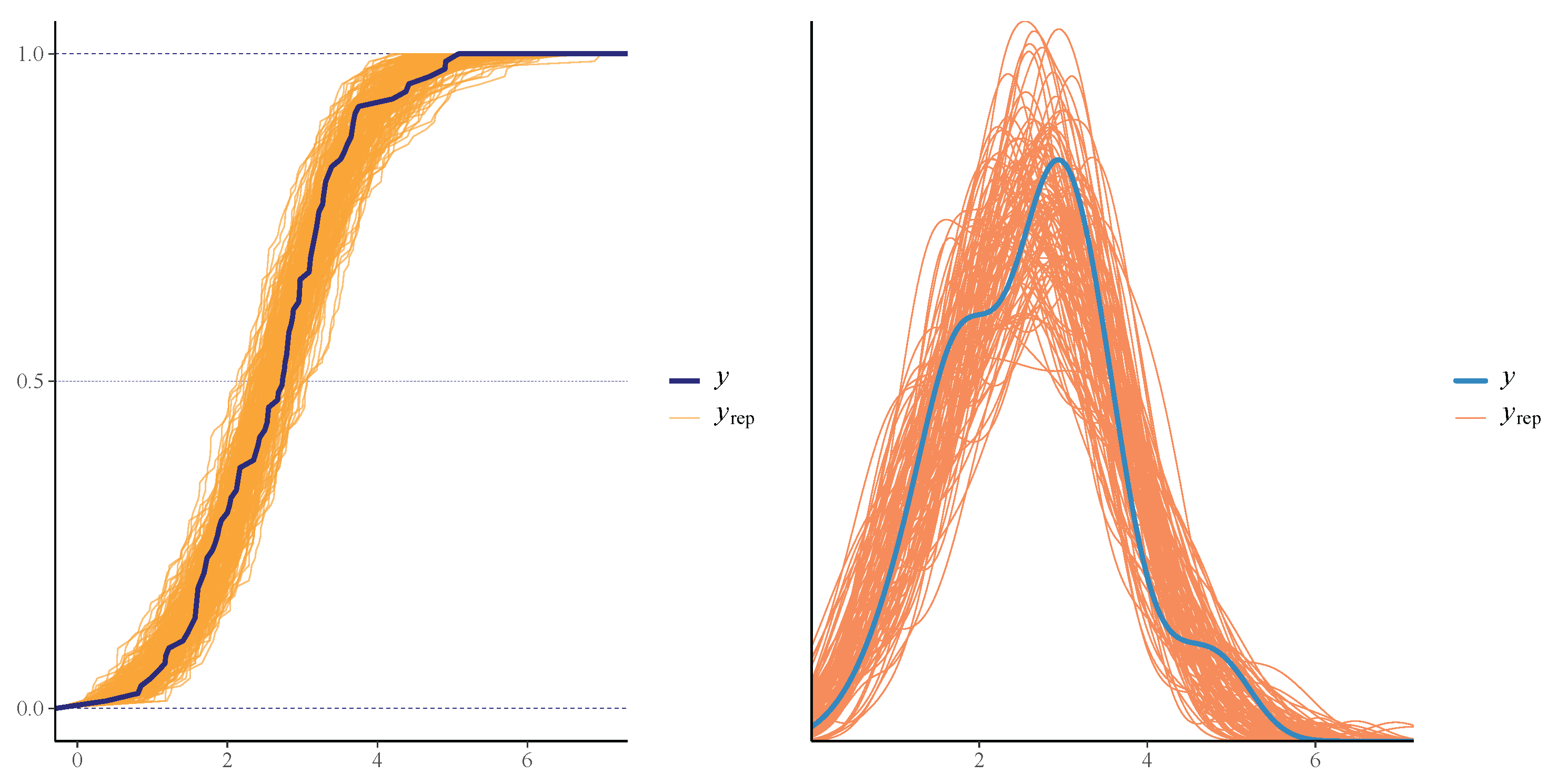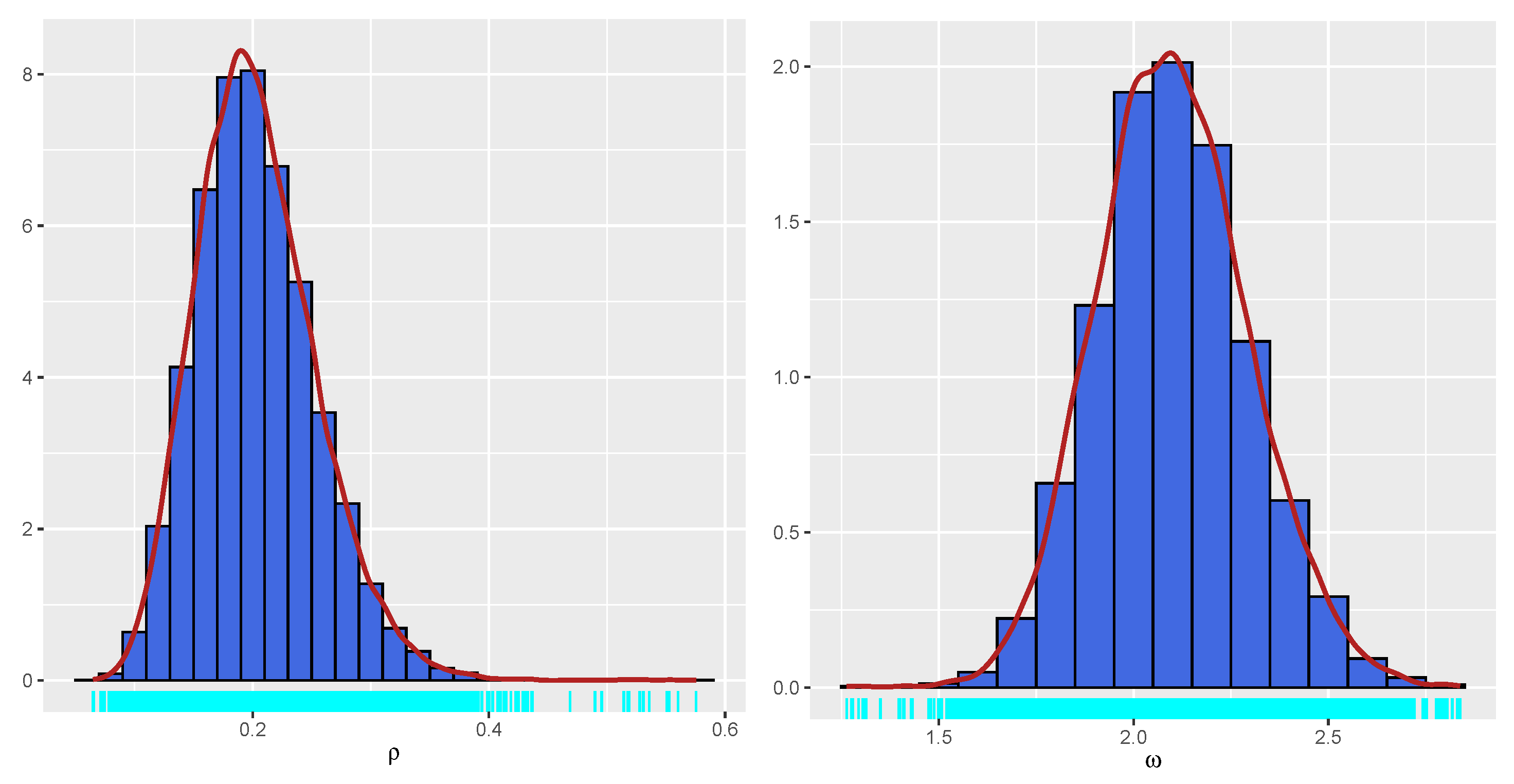1. Introduction
Probabilistic models are pivotal in representing and analyzing datasets across diverse practical applications. Classical distributions, such as log-normal, Lomax, exponential, Weibull, gamma, and beta, have been widely utilized; however, these models often fail to capture the complexity of certain datasets adequately. These traditional models struggle to accommodate varying degrees of skewness, kurtosis, and diverse hazard rate behaviors frequently encountered in empirical data. Consequently, there has been a growing interest in developing new families of distributions that offer enhanced flexibility, interpretability, and practical applicability.
To address these challenges, researchers have introduced various transformation-based approaches to generalize existing distributions. Among them, the T-X transformation [
1] and the exponentiation technique have played foundational roles in the generation of flexible distribution families. For example, a new family of heavy-tailed (NFHT) distributions was proposed using the T-X transformation technique to analyze heavy-tailed datasets [
2]. These methods have significantly broadened the modeling capacity of baseline distributions by introducing shape-controlling parameters.
In this study, we explored the
-power transformation (PPT), where
is a constant, to develop a new and flexible probability model, initially presented by Lone and Jan [
3] and later utilized by Kumar et al. [
4]. This transformation enhances the base distribution by providing a unique blend of flexibility and skewness. This transformation allows for a smooth and continuous modification of the original distribution, enhancing its shape by introducing greater skewness and kurtosis, while still keeping the model analytically manageable. As a result, it offers both theoretical appeal and practical usefulness, especially for modeling complex real-world data. Moreover, this type of distribution has also shown good performance under the Bayesian framework.
Among the various distributions derived from the
-power transformation (PPT) framework, the
-exponentiated Weibull distribution has received particular attention due to its effectiveness in modeling lifetime and reliability data. The
-power transformation (PPT) framework is conceptually rooted in earlier transformation-based methodologies, particularly the alpha power transformation (APT), which has been widely adopted in probability theory, survival analysis, and reliability modeling. The APT technique has served as a foundation for constructing numerous generalized distribution families that offer improved flexibility in capturing complex data behaviors. For instance, the Alpha Power Weibull Quantile (APWQ) distribution and its associated family [
5], along with the Alpha Power Exponentiated Weibull (APEW) distribution [
6], were developed using APT techniques. Additionally, Mead et al. [
6] investigated the mathematical properties of the APT family, filling gaps in earlier research, such as the work by Mahdavi and Kundu [
7]. Several other notable families of distributions have been introduced using APT transformations. These include, but are not limited to, the Sine Alpha Power-G family [
8], the Alpha Power Transformed Logistic (APTL) distribution [
9], the Lomax distribution [
10], the Pareto and inverse Pareto distributions [
11,
12], the Kumaraswamy distribution [
13], the Alpha Power Topp–Leone Weibull distribution [
14], and the Alpha Power of the Power Ailamujia distribution [
15]. Moreover, some authors have proposed modifications to the APT transformation to develop novel families of distributions. For instance, Klakattawi and Aljuhani [
16] introduced a new family of distributions by integrating both the T-X and APT transformation techniques. Alotaibi et al. [
17] employed a weighted APT transformation to construct a new distribution. Additionally, Elbatal et al. [
18] proposed an innovative alpha power transformation method that utilizes the quantile function alongside alternative cumulative distribution function (CDF) transformations.
Building on these developments, Lone and Jan [
3] proposed the
-Exponentiated Transformed (PET) family, characterized by its CDF:
where
denotes the CDF of a base distribution. This transformation framework improves its flexibility and ability to capture skewness, thereby enabling more precise modeling of complex data structures.
Inspired by the PET framework, we introduce a novel method to develop a new family of distributions using a logit function of the CDF. This new family, termed the -power logistic-G (PiPL-G) family, offers robustness and flexibility relative to conventional compound distributions. The PiPL-G family comprises two parameters that enable it to estimate its parameters and mathematical tractability effectively.
The
-power transformation used in the proposed model is mathematically distinct from other transformation techniques such as the alpha power transformation and the T-X family. In our formulation,
is a known positive constant (e.g.,
), and the transformation is applied through a bounded, logistic-type exponent:
This design comes with several key benefits. First, the term is always confined to the range , which helps maintain numerical stability and ensures the distribution behaves smoothly. Second, keeping as a constant gives the model enough flexibility to represent a variety of hazard function shapes, including increasing, J-shaped, and reverse J-shaped, without the need for extra shape parameters. This not only prevents over-parameterization but also makes both the theoretical development and parameter estimation more straightforward.
In contrast, the alpha power transformation requires the estimation of an extra shape parameter, which can increase model complexity and reduce interpretability. Similarly, the T-X family involves complex transformations that may lack closed-form expressions for key functions, such as the density or quantile function, which complicates inference and application. The -power transformation, therefore, offers a practical balance between model flexibility and computational tractability. Empirical results in this study support its utility, demonstrating good fit to real-world data across different applications while maintaining analytical and computational simplicity.
In reliability engineering, effectively modeling lifetime data is crucial for understanding failure mechanisms and predicting product reliability. The Weibull distribution, long regarded as a cornerstone in reliability theory, has been extensively employed to analyze such data. By integrating the PiPL-G framework, we provide an enhanced Weibull distribution that can capture diverse failure rates and survival probabilities with improved precision. This makes it particularly well suited for studying datasets involving accelerated life testing, stress–strength models, and warranty analysis. Among its members, the Weibull distribution stands out due to its prominence in reliability theory and life testing [
19,
20]. Integrating the PiPL-G framework further refines the Weibull distribution, aligning it with the unique features of various applications.
Our proposed PiPL-G family exhibits excellent flexibility for handling reliability engineering data, especially in cases where traditional models fail to accommodate complex failure patterns. For example, we have demonstrated the application of the PiPL-Weibull distribution in analyzing datasets with non-monotonic hazard rates and varying skewness levels. These features are essential for accurately assessing the reliability of systems and components in industries such as aerospace, manufacturing, and energy. Additionally, we applied our model to a real-world engineering dataset using a Bayesian approach, further enhancing its scope and demonstrating its practical utility. For Bayesian inference, we utilized Hamiltonian Monte Carlo (HMC), which is more efficient than Gibbs sampling and Metropolis–Hastings, implementing it through the rstan package in R version 4.4.3.
The proposed PiPL-G family builds upon existing reliability models by providing enhanced flexibility and adaptability to capture complex data behaviors commonly encountered in practice. Its ability to represent diverse hazard shapes and distributional features offers practitioners a more refined and versatile tool for modeling lifetime and survival data.
The rest of this paper is organized as follows:
Section 2 introduces the PiPL-G family, while
Section 3 presents the PiPL-Weibull distribution.
Section 4 presents the mathematical and statistical properties, and
Section 5 covers statistical inferences. Finally,
Section 6,
Section 7 and
Section 8 present simulation experiments, applications, and conclusions, respectively.
8. Conclusions
This study introduces a novel and flexible distribution family, the -power logistic-G family, with a particular focus on the Weibull baseline distribution, resulting in the PiPLW distribution. The proposed distribution exhibits a variety of hazard rate shapes, such as increasing, bathtub, J-shaped, and reverse J-shaped, making it suitable for a broad range of applications, particularly in reliability and survival analysis.
We explored the statistical properties of the PiPLW distribution and employed the MLE method for parameter estimation. A Monte Carlo simulation study demonstrated that the MLE performs well, with mean square errors decreasing as sample sizes increase, even for small samples. The distribution’s utility was further demonstrated by applying it to two real-world datasets from reliability engineering. Goodness-of-fit statistics and model selection criteria confirmed the superior performance of the PiPLW distribution compared to seven competing models. Additionally, a Bayesian approach using Hamiltonian Monte Carlo (HMC) via the ‘rstan’ package in R was successfully applied, showing the model’s compatibility with both frequentist and Bayesian frameworks. Under the Bayesian framework, the proposed model exhibited excellent predictive performance for both datasets, further underscoring its potential for diverse applications. For practitioners in reliability engineering and survival analysis, this study provides a salient choice for modeling data across diverse domains, delivering robust and efficient parameter estimation compared to several existing alternatives.
Despite the promising results, several limitations must be acknowledged. First, the model’s performance was assessed using only two datasets from the reliability domain, which may limit generalizability. Second, the proposed distribution assumes complete data without censoring; extending the methodology to handle censored or truncated data would enhance its applicability in medical and actuarial studies. The current simulation study focuses on moderate-to-large sample sizes and does not explicitly evaluate performance under small sample sizes or high censoring levels.
Future research can explore several directions. The -power logistic-G family can be extended using other baseline distributions to create new flexible models tailored to specific data types. Furthermore, the PiPLW distribution can be incorporated into regression models to handle covariates and extended to multivariate settings to address complex data structures. Finally, real-world applications in areas such as biomedical research, finance, and environmental studies should be pursued to validate the model’s utility further.
